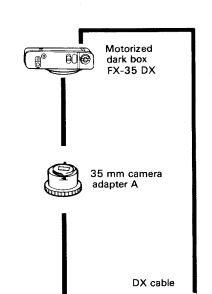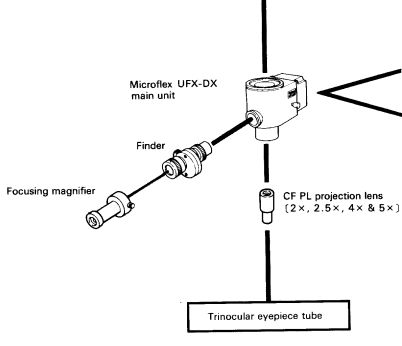back

Optiphot photography
Released when photography meant film,
semi-automated image capture involved complex optics:
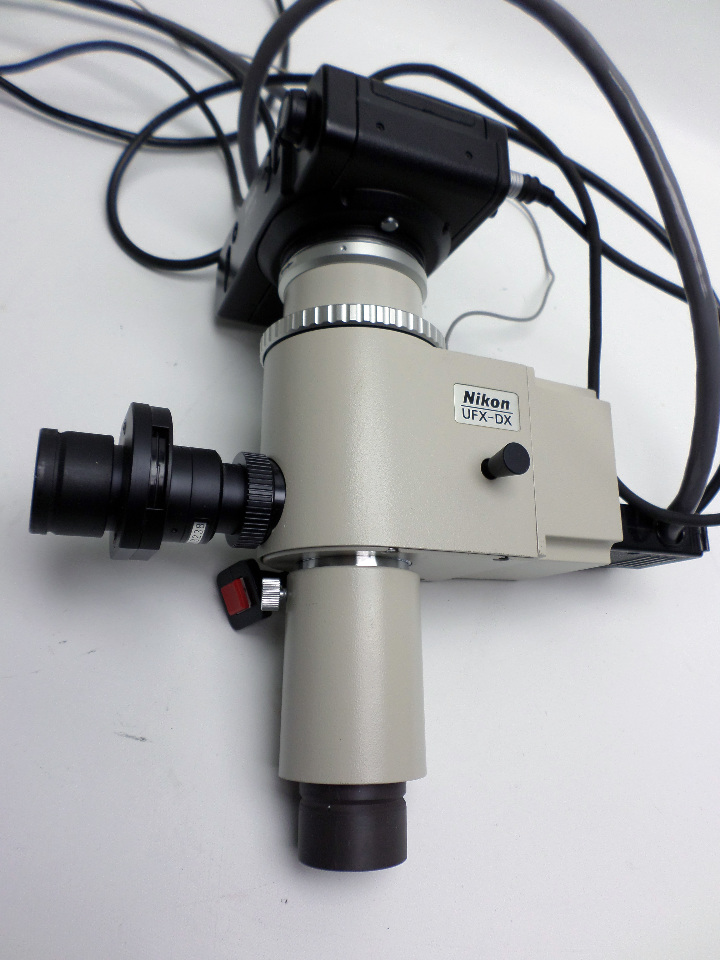
.. for a camera body:
… with prisms for finder and exposure:
… so trinocular chimneys mount projection lenses for 210mm tube length
and clamp proprietary Microflex units, which are obsoleted by digital cameras.
With (trinocular) head removed, vertical illuminator flange-to-camera
body flange distance for parfocal Canon EF DSLR is about 58mm:
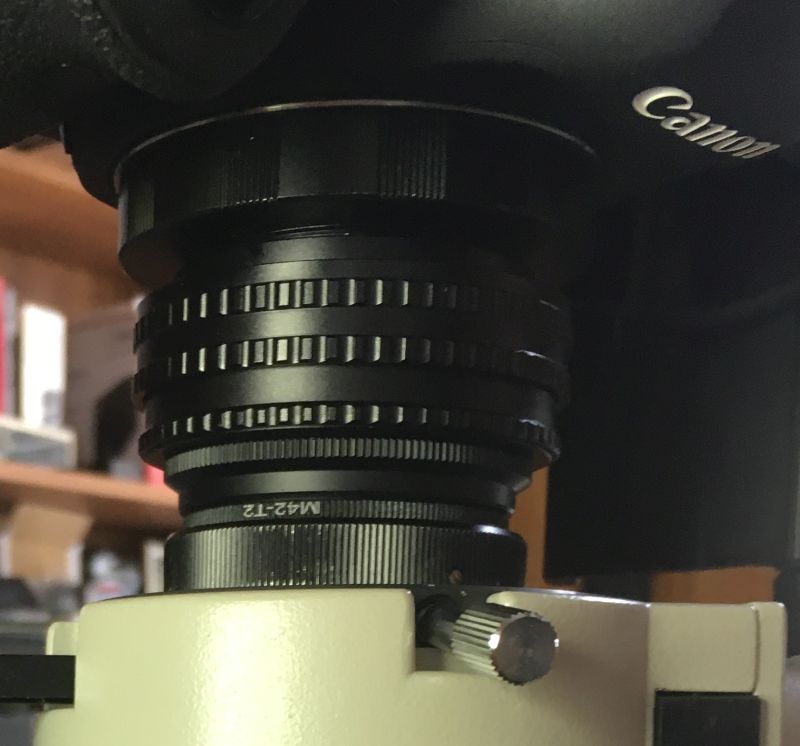
Canon EF DSLR flange-to-sensor distance is 44mm
Canon’s RF camera bodies have 20mm flange-to-sensor distance.
With its chimney removed,
Nikon’s F trinocular head ISO photo port has about 76mm flange-to-flange distance.
(Canon) mirrorless bodies are parfocal on F trinocular heads' ISO photo port…
A (sprayed black) PVC reducer from 2 inch o.d. to 1.5 inch i.d.
has 42mm o.d., fittting Nikon’s trinocular chimneys,
and 48mm i.d., fitting a Pentax K/M to T2 adapter,
that gets epoxied in place:

SUPER-FAST epoxy cures in 5 minutes, but wants 24 hours for full strength
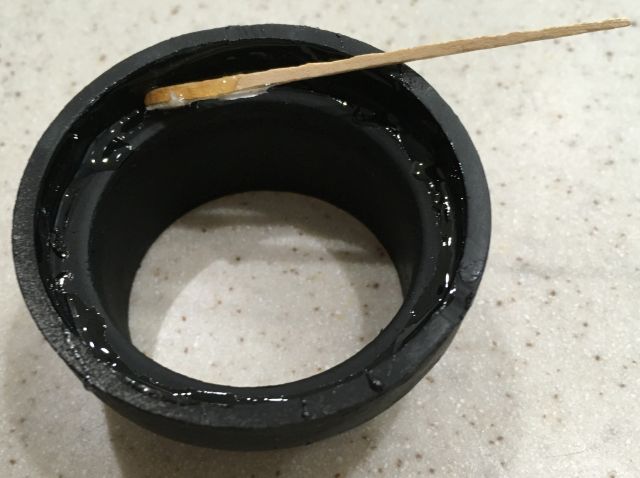
PVC reducer was cut short so that K/M adapter would bottom in it
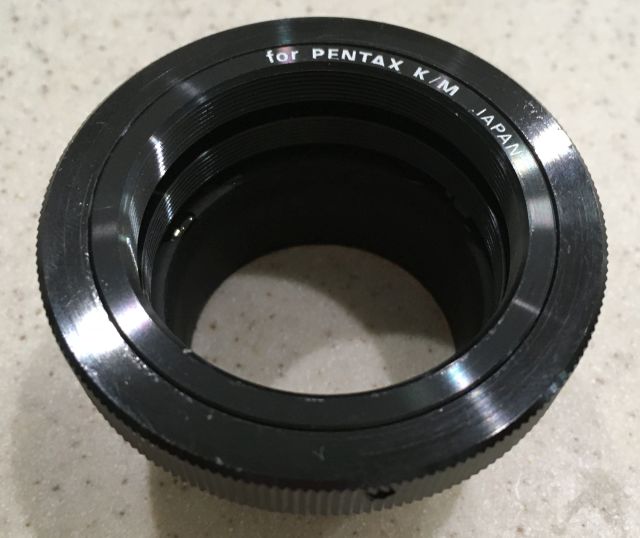
T2 adapter allows clocking for desired camera orientation

Will a diaphragm between projection lens and sensor improve contrast?
| 
